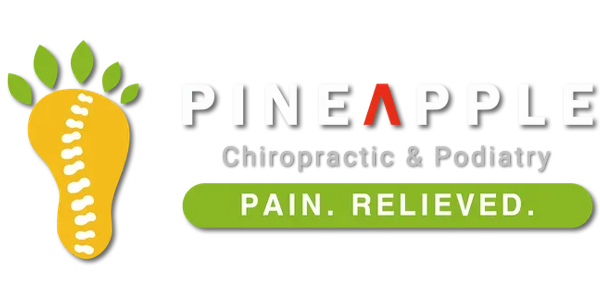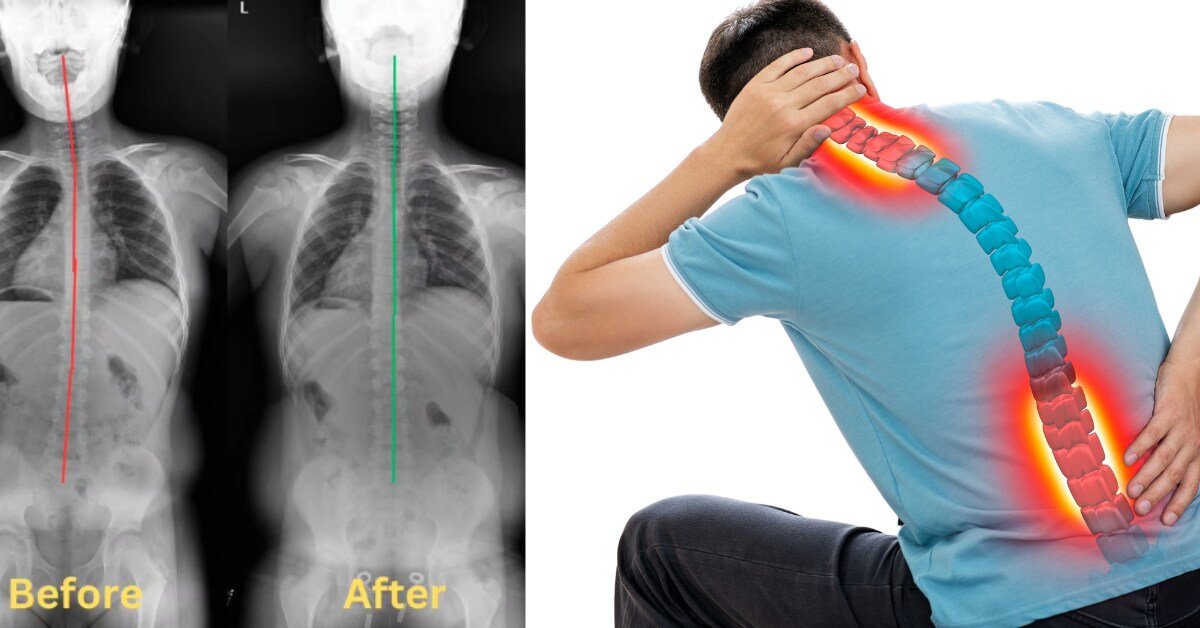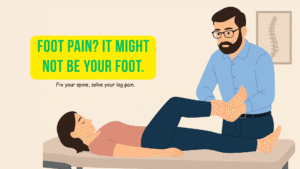Chiropractor for Sciatica Suffering from sciatica can be debilitating. Finding relief is crucial for quality of life.
Today we are talking about the story of Zenaida Rodriguez who was struggling with sciatica, a condition marked by pain radiating from the lower back, down the leg, which affects many people. His pain was a mild discomfort making daily activities challenging. Throughout the session, I offered a non-invasive way to manage and potentially alleviate his pain.
I focused on spinal adjustments and alignments to improve his body’s natural healing process. This method significantly reduced sciatica symptoms without the need for medications or surgery.
Curious about how a chiropractor can help with your sciatica pain? Read on to discover more how I treated Zenaida Rodriguez and others about chiropractic care. Zenaida Rodriguez See review
“Regular chiropractic adjustments go hand-in-hand with good health.” – Peter Fonda
What Is Sciatica?

Zenaida Rodriguez had pain along the sciatic nerve, often felt in the lower back, hips, and legs. Then I offered relief through spinal adjustments, easing pressure on the nerve.
Experiencing sharp pain that radiates from your lower back to your legs? It could be sciatica. This common condition affects many people, causing discomfort and mobility issues like Zenaida Rodriguez. Understanding sciatica is the first step to finding relief.
I explain that sciatica is a medical condition which involves pain along the sciatic nerve. This nerve runs from the lower back, through the hips, and down each leg. The pain can range from mild to severe, often affecting daily activities.
Causes Of Sciatica
I analyzed the root cause of sciatica of Zenaida Rodriguez. Here are some common of them:
- A disc in the spine can press on the sciatic nerve, causing pain.
- Narrowing of the spinal canal can compress the nerve.
- The piriformis muscle can irritate the sciatic nerve.
- Trauma to the lower back can trigger sciatica.
Symptoms Of Sciatica
Zenaida Rodriguez was facing some signs of sciatica. Common symptoms include:
- Lower back pain that radiates down the leg.
- Numbness that is usually felt in the leg or foot.
- Tingling sensation which is described as “pins and needles.”
- Weakness while moving the leg or foot.
Diagnosis Of Sciatica
I use several methods to diagnose sciatica. Some of the methods I applied on my patient include:
- Physical exam: Assessing the range of motion and pain points.
- Imaging tests: MRI or CT scans can help identify the cause.
- Nerve tests: Electromyography (EMG) tests the electrical activity of muscles.
Treatment Options For Sciatica
Many treatment options are available for sciatica. These can range from home remedies to medical interventions. The treatments that I used for my patient are:
- Physical therapy: Exercises can strengthen muscles and improve flexibility.
- Medications: Pain relievers and anti-inflammatory drugs can help.
- Chiropractic care: Adjustments can relieve pressure on the sciatic nerve.
- Surgery: In severe cases, surgical intervention may be necessary.
Sciatica of Zenaida Rodriguez was painful, but understanding the condition helped in managing it effectively. Whether it was through simple exercises or professional care, I followed many ways to find relief.
Common Symptoms Of Sciatica Treated By Chiropractor
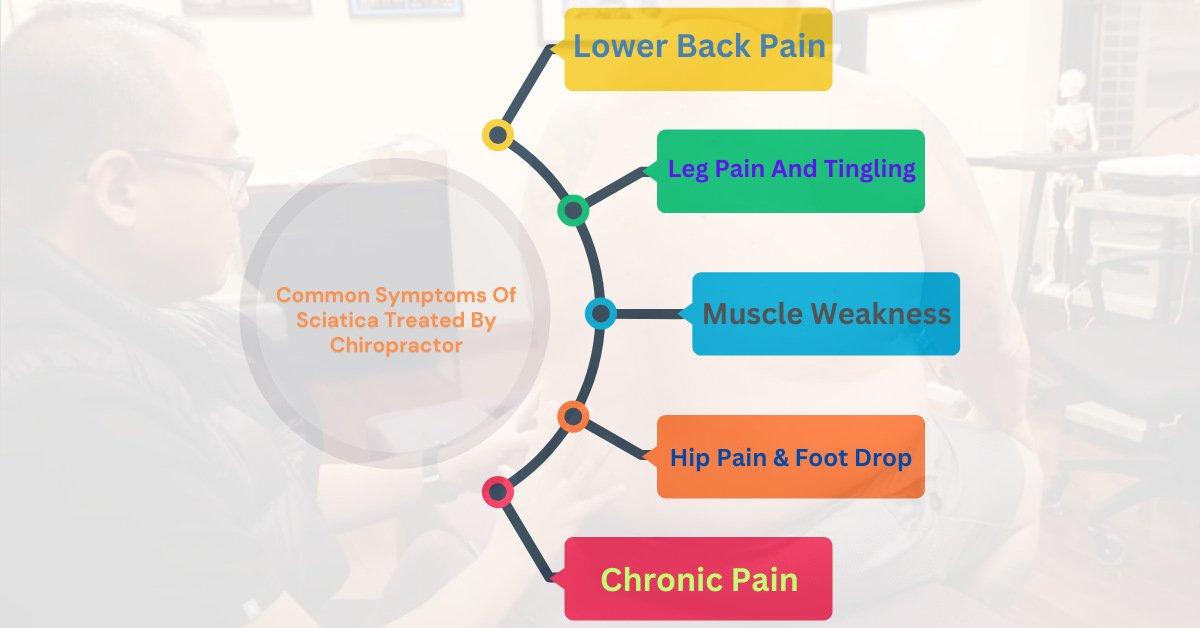
Sciatica often causes pain, numbness, or tingling in the lower back, buttocks, and legs. I treat these symptoms through spinal adjustments. This helps reduce pressure on the sciatic nerve.
Sciatica can cause unbearable pain. Many people turn to me for relief. But what symptoms do I treat? Let’s explore some common sciatica symptoms.
Lower Back Pain
In my sessions, lower back pain is a frequent sciatica symptom. It can range from mild to severe. I can address this pain through chiropractic care.
Leg Pain And Tingling
Sciatica often leads to leg pain. This can include tingling or burning sensations.
- Sharp leg pain: Often felt in one leg, it can radiate down the thigh.
- Tingling or burning: Sensations that can extend from the lower back to the foot.
- Numbness: A loss of feeling in the affected leg.
Muscle Weakness
Muscle weakness is another symptom. It can affect daily activities.
Difficulty Moving
Sciatica can make movement hard. Walking, bending, or standing can be painful.
- Walking: Pain can intensify with each step.
- Bending: Discomfort when bending forward or backward.
- Standing: Pain can worsen with prolonged standing.
Hip Pain
Pain in the hip is common with sciatica. I can help alleviate this.
Foot Drop
Foot drop is a severe symptom. It causes difficulty in lifting the front part of the foot.
Chronic Pain
Some experience chronic pain. This can be persistent and impact quality of life.
I can help manage these symptoms. I generally use techniques to reduce pain and improve function. Learn more about the symptoms and treatments at Johns Hopkins Medicine.
Understanding Chiropractic Care What You Need To Know
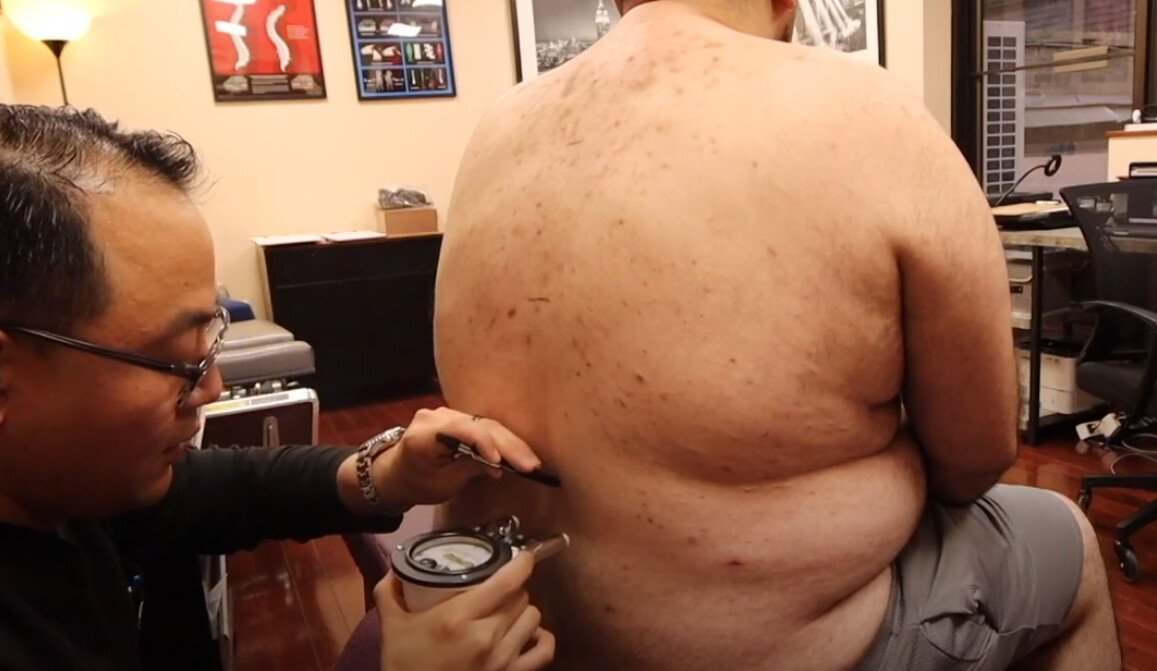
Chiropractic care for sciatica focuses on relieving pain through spinal adjustments. This treatment helps reduce pressure on nerves. Many find it effective for managing symptoms and improving daily function.
Sciatica can be a painful and debilitating condition. Many people seek chiropractic care as a solution. Understanding what chiropractic care entails can help you make informed decisions about your health.
What Is Chiropractic Care?
Chiropractic care focuses on diagnosing and treating neuromuscular disorders. As a chiropractor, I use hands-on spinal manipulation and other techniques. The goal is to improve the health of the spine and related structures. Washington Care Clinic Learn more about the role of chiropractic care in sciatica treatment at
Benefits Of Chiropractic Care For Sciatica
Several benefits come from chiropractic care for sciatica. Below are some key points:
- Pain relief: Chiropractic adjustments can reduce nerve pressure.
- Improved mobility: Regular sessions can enhance joint movement.
- Non-invasive treatment: It avoids the need for surgery or medication.
- Personalized care: Treatment plans tailored to individual needs.
Techniques Used In Chiropractic Care
I use various techniques to treat sciatica. Here are a few common ones:
- Spinal adjustments: Align the spine to reduce nerve irritation.
- Ice/heat therapy: Manage inflammation and relieve pain.
- Ultrasound: Promote tissue healing and reduce pain.
- Physical therapy exercises: Strengthen muscles and improve flexibility.
How To Choose A Chiropractor
Selecting the right chiropractor is crucial. Here are some tips to consider:
- Check credentials: Ensure the chiropractor is licensed and certified.
- Read reviews: Look for feedback from other patients.
- Ask about experience: Inquire about their expertise in treating sciatica.
- Schedule a consultation: Meet the chiropractor to discuss your condition.
What To Expect During A Chiropractic Visit
Your first visit to me involves several steps. Here is what typically happens:
- Initial consultation: Discuss your symptoms and medical history.
- Physical examination: Assess your posture, reflexes, and spine alignment.
- Diagnostic tests: May include X-rays or MRIs to pinpoint the issue.
- Treatment plan: Develop a personalized plan based on findings.
Safety And Risks Of Chiropractic Care
Chiropractic care is generally safe but it’s important to understand potential risks. Here’s what you should know:
- Rare complications: Some people may experience minor side effects like soreness.
- Communication: Always inform your chiropractor of any existing health conditions.
- Professional standards: Ensure your chiropractor follows industry guidelines for safety.
Understanding chiropractic care can help you decide if it’s right for your sciatica. Always consult with a healthcare professional for personalized advice.
The Role Of Chiropractic Care In Treating Sciatica

I can help with sciatica by adjusting the spine. These adjustments ease pressure on nerves and reduce pain. Regular visits may improve mobility and overall comfort.
Sciatica is a painful condition affecting the sciatic nerve. It can cause discomfort in the lower back, hips, and legs. Chiropractic care can offer relief. Let’s explore how I help treat sciatica.
What Is Sciatica?
Sciatica occurs when the sciatic nerve is compressed. This nerve runs from the lower back through the hips and legs. Symptoms include:
- Pain: Often sharp and shooting, traveling down the leg.
- Numbness: A tingling sensation or loss of feeling.
- Weakness: Difficulty moving the leg or foot.
Benefits Of Chiropractic Care
Chiropractic treatment for sciatica can be beneficial. Here are the main advantages:
- Non-invasive: Avoids the need for surgery.
- Pain relief: Reduces inflammation and discomfort.
- Improved mobility: Restores movement and function.
- Personalized care: Treatment plans tailored to individual needs.
Spinal Adjustments
In my clinic, I perform spinal adjustments to treat sciatica. This involves:
- Realigning the spine: Helps reduce nerve compression.
- Enhancing blood flow: Promotes healing and reduces pain.
- Restoring nerve function: Improves overall nerve health.
Other Chiropractic Techniques
Apart from spinal adjustments, I use various techniques. These include:
- Physical therapy: Exercises to strengthen muscles and improve flexibility.
- Ice and heat therapy: Reduces inflammation and pain.
- Lifestyle advice: Tips on posture, exercise, and diet to prevent sciatica.
Why Choose Chiropractic Care?
Chiropractic care offers a holistic approach to treating sciatica. It focuses on:
- Natural healing: Encourages the body to heal without drugs.
- Whole-body wellness: Addresses overall health, not just symptoms.
- Long-term relief: Aims to prevent future sciatic pain.
Treatment Approaches Used By Chiropractors For Sciatica
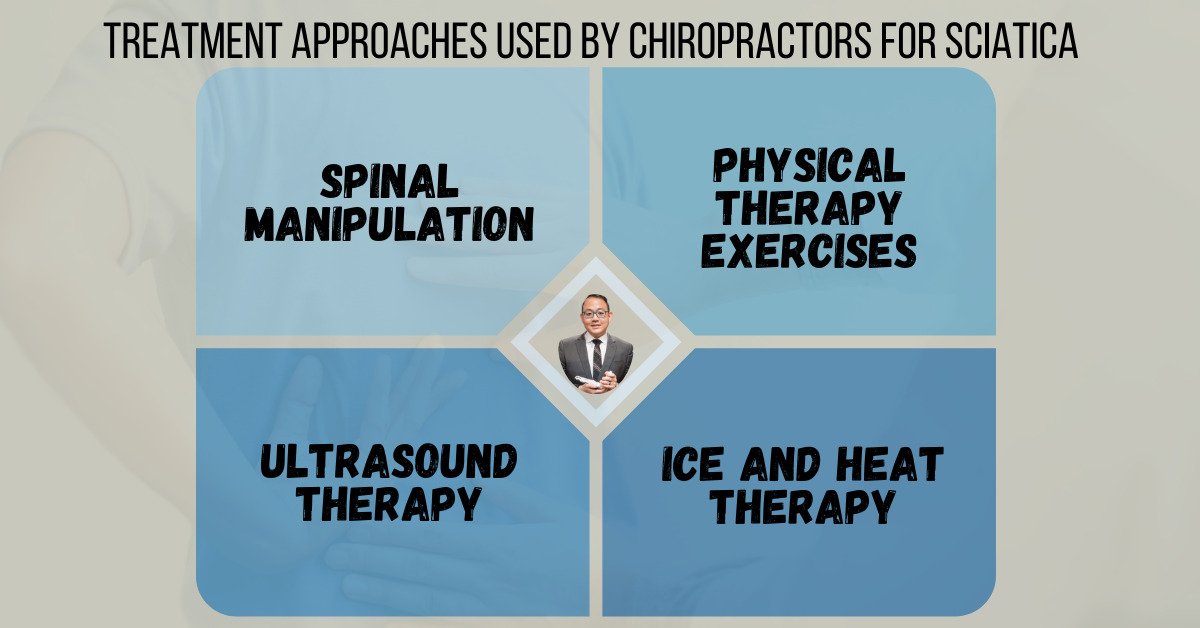
I treat sciatica using spinal adjustments to relieve pressure on nerves. I also use massage therapy and exercises to reduce pain.
Sciatica can be a debilitating condition. I often offer relief through various methods. Each technique targets pain and promotes healing.
Spinal Manipulation
Spinal manipulation is a common approach. I use controlled force on joints to improve function. This method helps reduce inflammation and pain. It also promotes natural healing by restoring mobility to the spine. For more on spinal manipulation, check out this [study by the American Chiropractic Association].
Ice And Heat Therapy
Ice and heat therapy is another effective treatment. Here are the key benefits:
- Ice therapy: Reduces inflammation and numbs sore tissues.
- Heat therapy: Increases blood flow and relaxes muscles.
- Alternating ice and heat: Can maximize pain relief and healing.
If you’d like to read more about the science behind ice and heat therapy, you can explore this [article from WebMD]
Ultrasound Therapy
Ultrasound therapy is non-invasive and effective. It uses sound waves to penetrate tissues. This technique reduces muscle spasms, stiffness, and pain. It also promotes faster healing by increasing blood flow to the affected area. For further details, check out [this overview on ultrasound therapy from Mayo Clinic]
Physical Therapy Exercises
Physical therapy exercises are crucial for long-term relief. Some key exercises include:
- Stretching exercises: Improve flexibility and reduce pressure on nerves.
- Strengthening exercises: Build core muscles to support the spine.
- Aerobic exercises: Increase overall fitness and reduce pain flare-ups.
Lifestyle Advice And Ergonomic Training
I often provide lifestyle advice. This helps manage sciatica symptoms better. Here are some common recommendations:
- Proper posture: Reduces strain on the spine and nerves.
- Ergonomic adjustments: Ensure workstations support spinal health.
- Healthy habits: Like regular exercise and a balanced diet to maintain overall health.
For a more comprehensive guide on sciatica exercises, visit [Healthline’s sciatica exercise tips]
Is Sciatica Pain Treatment Painful?
My treatments for sciatica are usually gentle and aim to reduce pain. Many patients find relief without significant discomfort. Chiropractic adjustments can help realign the spine, easing nerve pressure.
Sciatica pain can be unbearable, making everyday tasks difficult. Seeking relief through chiropractic care is a popular option. But many wonder, “” Let’s explore.
Understanding Sciatica Treatment Techniques
I use several techniques to treat sciatica. These methods target the root cause of pain. Here’s a brief overview of common techniques:
- Spinal Adjustments: Realigns the spine to reduce nerve pressure.
- Ice/Cold Therapy: Reduces inflammation and numbs the pain.
- Ultrasound: Uses sound waves to soothe deep muscle tissues.
- TENS: Electrical stimulation to relax muscles.
Patient Experiences
Many patients report their experiences. These accounts can help you understand what to expect.
- Mild Discomfort: Some feel slight pressure during adjustments.
- Immediate Relief: Many experience pain reduction after the first session.
- Gradual Improvement: Pain lessens over multiple visits.
- Personal Variation: Individual pain thresholds vary the experience.
Safety And Effectiveness
Chiropractic care is known for its safety. The treatments are non-invasive and drug-free.
- Low Risk: Minimal side effects compared to surgical options.
- High Success Rate: Many patients find significant relief.
- Holistic Approach: Treats the body as a whole, not just symptoms.
- Personalized Care: Tailored to individual needs and conditions.
For more on the safety and benefits of chiropractic care, check out [this article from the National Center for Complementary and Integrative Health]
Comparing With Other Treatments
How does chiropractic care stack up against other treatments? Let’s compare.
- Medication: Offers quick relief but has side effects.
- Physical Therapy: Strengthens muscles but takes longer.
- Surgery: Effective but involves risks and longer recovery.
- Home Remedies: Provide temporary relief but not a permanent solution.
Understanding these aspects can help you make an informed decision about sciatica treatment.
Can A Chiropractor Help You Relieve Sciatica Pain?
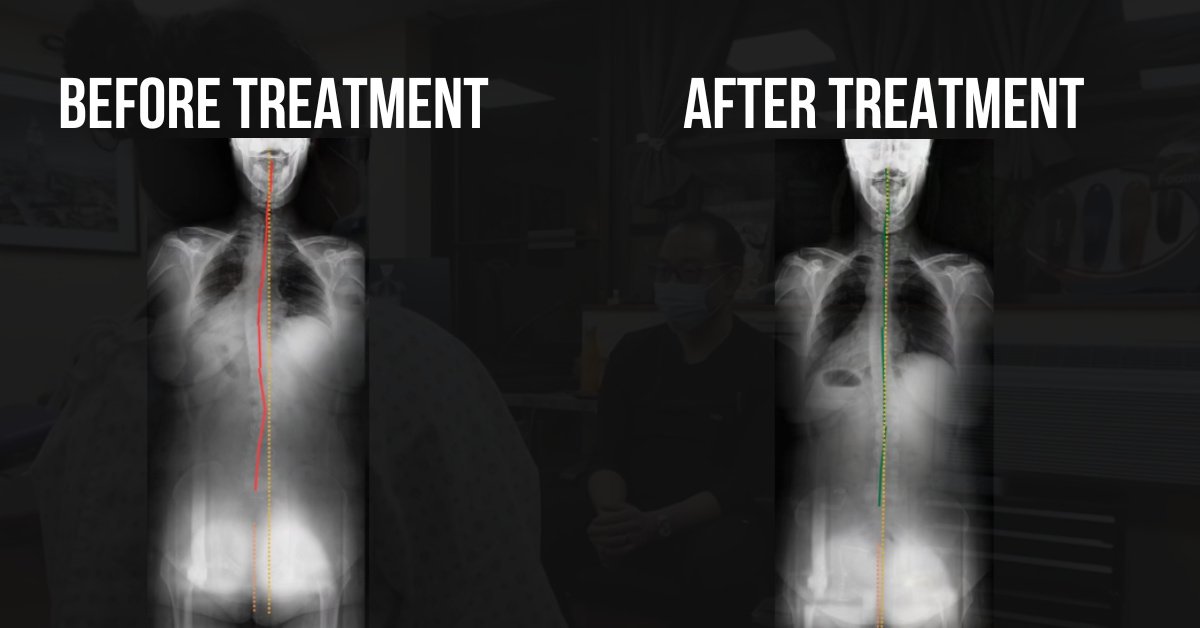
I can ease sciatica pain through spinal adjustments. These adjustments reduce pressure on the sciatic nerve. Regular sessions may help improve mobility and relieve discomfort.
Experiencing sciatica pain can be debilitating. A chiropractor may provide relief. Using hands-on techniques, I can target the root cause of sciatica. This approach can help reduce pain and improve mobility. For a more detailed overview of how chiropractic care helps with sciatica, check out this article from the Mayo Clinic.
What Is Sciatica?
Sciatica is nerve pain. The sciatic nerve runs from the lower back to the legs. When this nerve gets irritated, it can cause pain, numbness, or tingling. This discomfort often affects one side of the body.
How Do Chiropractors Treat Sciatica?
I use several methods to address sciatica. Here are a few common techniques:
- Spinal adjustments: Realigning the spine to alleviate nerve pressure.
- Ice/Heat therapy: Reducing inflammation and promoting blood flow.
- Physical therapy: Strengthening muscles to support the spine.
- Lifestyle advice: Recommending changes to daily habits for better posture. For more information on chiropractic treatments for sciatica, check out this guide from the American Chiropractic Association.
Benefits Of Chiropractic Care For Sciatica
Chiropractic care offers many advantages for sciatica sufferers. A few key benefits include:
- Non-invasive treatment: No surgery or medication required.
- Personalized care: Tailored treatment plans for individual needs.
- Pain relief: Targeting the root cause of sciatica pain.
- Improved mobility: Enhancing range of motion and flexibility. To learn more about the effectiveness of chiropractic care, explore this article from WebMD.
What To Expect During A Chiropractic Visit
During your visit, I will assess your condition. Here’s what typically happens:
- Initial consultation: Discussing your symptoms and medical history.
- Physical examination: Checking your spine and posture.
- Diagnosis: Identifying the cause of your sciatica.
- Treatment plan: Creating a personalized approach to manage your pain.
If you’d like to know more about what to expect from a chiropractic visit, check out this guide on chiropractic care from the Cleveland Clinic.
Tips For Managing Sciatica At Home
While chiropractic care helps, you can also manage sciatica at home. Consider these tips:
- Stay active: Engage in gentle exercises to keep your muscles strong.
- Maintain good posture: Avoid slouching to reduce spinal pressure.
- Use ergonomic furniture: Support your back with a proper chair.
- Apply ice or heat: Alternate between ice packs and warm compresses.
When To See A Chiropractor For Sciatica
Knowing when to seek professional help is crucial. Watch for these signs:
- Persistent pain: If your pain lasts for more than a few weeks.
- Limited mobility: Difficulty moving or performing daily tasks.
- Severe symptoms: Experiencing extreme pain, weakness, or numbness.
- Lack of relief: Home remedies not providing sufficient relief. If you’re unsure when to seek professional care, check out this resource from the American Chiropractic Association.
Why Chiropractic Adjustments Are Effective For Sciatica Relief
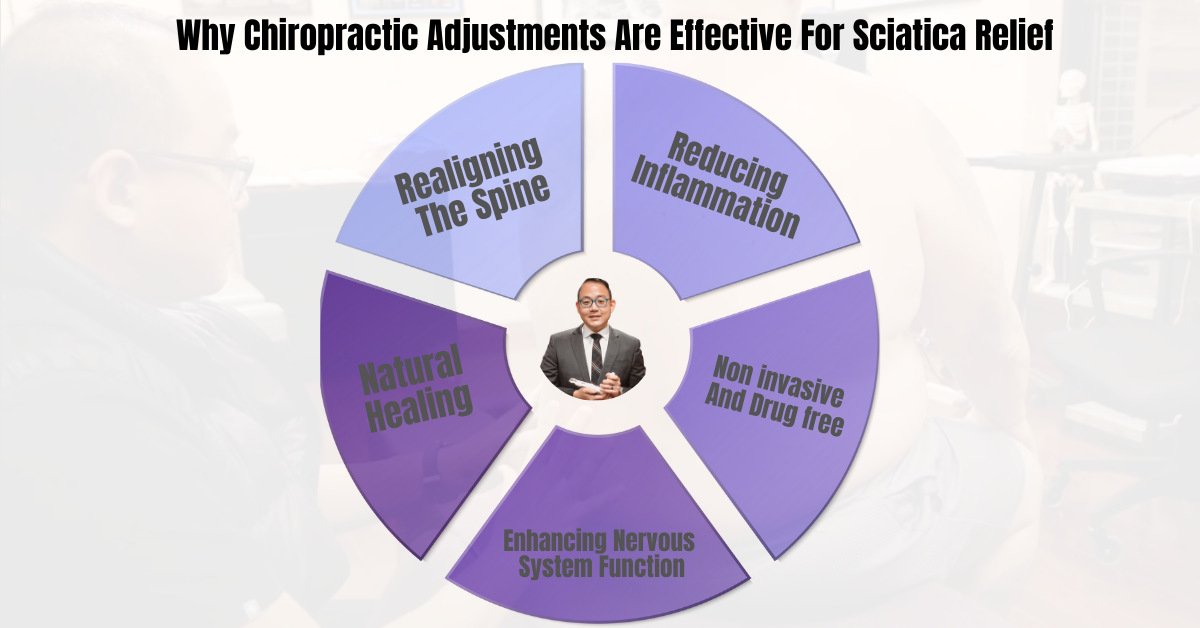
Chiropractic adjustments help relieve sciatica by reducing nerve pressure and improving spinal alignment. This non-invasive treatment targets the root cause of pain, providing effective relief.
Sciatica can be a debilitating condition. Chiropractic adjustments offer a natural solution. Many people seek me for pain relief and improved mobility. For more on the science behind chiropractic care, visit this article from Mayo Clinic.
Realigning The Spine
Chiropractic adjustments focus on realigning the spine. Misalignments can cause nerve pressure, leading to pain. Correcting these misalignments helps reduce this pressure:
- Spinal misalignments: Cause nerve pressure.
- Adjustments: Correct misalignments.
- Pain relief: Results from reduced nerve pressure.
- Improved mobility: Achieved through proper alignment.
Reducing Inflammation
Inflammation often accompanies sciatica. Chiropractic care helps to reduce this inflammation. I use specific techniques to target inflamed areas:
- Inflamed areas: Often linked to sciatica.
- Specific techniques: Used by chiropractors.
- Targeted care: Helps reduce inflammation.
- Pain reduction: Linked to decreased inflammation. To dive deeper into the role of inflammation in sciatica, refer to this article from Healthline.
Enhancing Nervous System Function
Proper spinal alignment boosts nervous system function. A well-functioning nervous system can aid in pain relief. Chiropractic care focuses on maintaining this balance. For a better understanding of how chiropractic adjustments influence the nervous system, check out this explanation from the Cleveland Clinic.
Natural Healing
Chiropractic adjustments promote the body’s natural healing process. The adjustments improve blood flow and reduce tension. This supports the body’s own healing mechanisms:
- Improved blood flow: Aids healing.
- Reduced tension: Helps the body heal.
- Natural process: Enhanced by chiropractic care.
- Supportive techniques: Encourage overall wellness. To learn more about the body’s healing mechanisms and how chiropractic care enhances them, visit this guide from WebMD.
Non-invasive And Drug-free
Chiropractic care is non-invasive and drug-free. It offers a natural alternative to traditional pain management. Many patients prefer this approach for its holistic benefits. Explore the non-invasive nature of chiropractic care in this article from the National Center for Complementary and Integrative Health.
Research And Evidence On Chiropractic Care For Sciatica
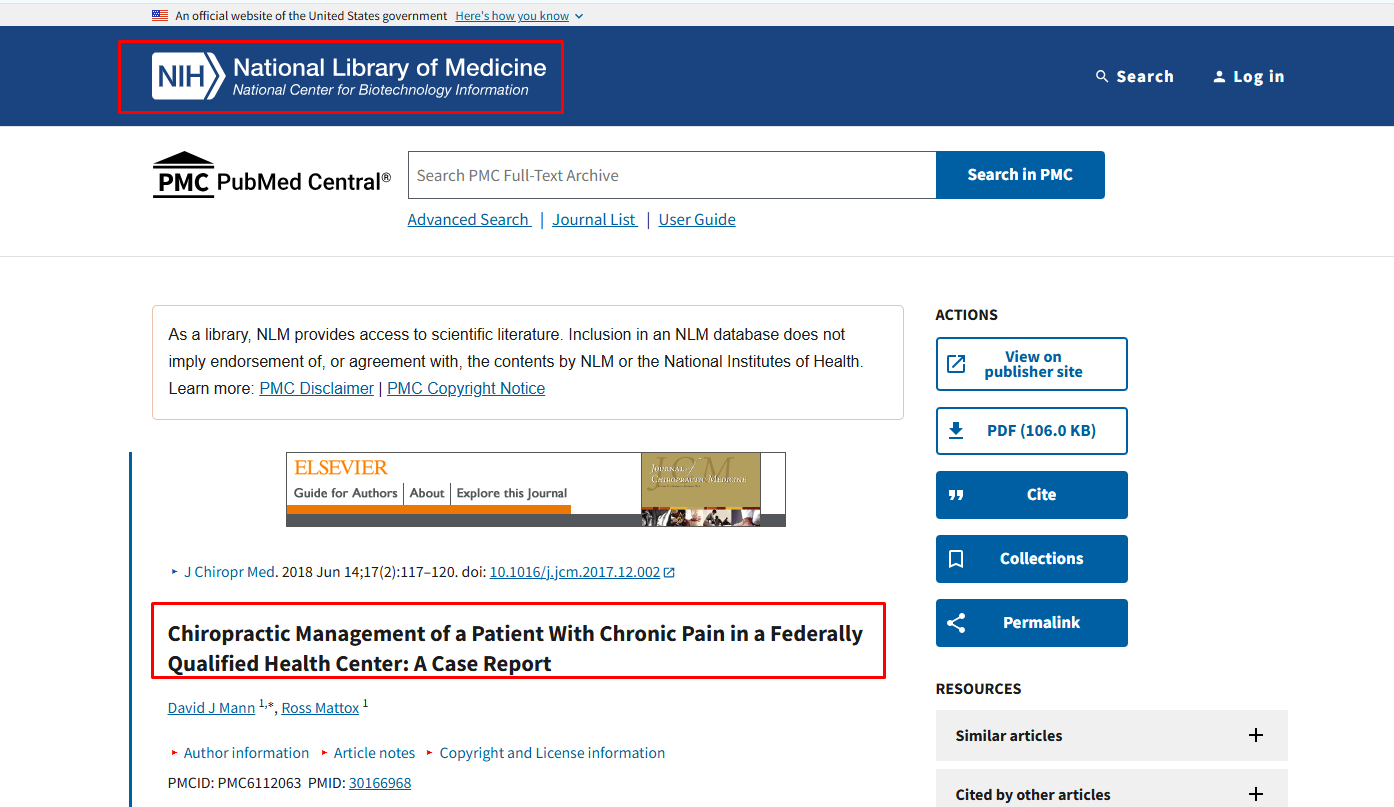
Research indicates chiropractic care can help alleviate sciatica pain. Spinal adjustments and manipulations improve mobility and reduce discomfort. Many patients report significant pain relief and increased quality of life.
Sciatica can be a painful and debilitating condition. Many people seek relief through chiropractic care. Let’s explore the research and evidence supporting this approach.
Effectiveness Of Chiropractic Care
Many studies have looked into chiropractic care for sciatica. The results are promising:
- Pain reduction: Chiropractic adjustments can reduce sciatica pain. According to a study published by the National Institutes of Health (NIH), chiropractic care has shown positive results in managing chronic pain conditions, including sciatica.
- Function improvement: Patients often see better movement and flexibility.
- Lower medication use: Chiropractic care may reduce the need for pain meds.
Clinical Trials And Studies
Several clinical trials provide insights into chiropractic care’s effectiveness for sciatica. These trials present noteworthy findings:
- A November 1, 2005 study: Showed significant pain relief after chiropractic adjustments. Read more about this study at the Journal of Manipulative and Physiological Therapeutics.
- A 2018 research: Highlighted reduced reliance on pain medication. For more details, see this research overview from the American Chiropractic Association (ACA).
Patient Testimonials
Many patients report positive outcomes from chiropractic care. Their stories are compelling:
- Rapid relief: Many patients experience quick pain reduction.
- Long-term benefits: Some report sustained improvements over time.
- Enhanced quality of life: Better sleep, mood, and daily function. Learn about real patient experiences on the DR Lee Foot website.
Safety Of Chiropractic Care
Safety is a crucial aspect when considering treatment options. Chiropractic care is generally safe for sciatica:
- Non-invasive: No surgery or injections are involved.
- Low risk: Few serious side effects reported. see the National Center for Complementary and Integrative Health.
- Professional training: Chiropractors undergo extensive education and training.
Cost-effectiveness
Chiropractic care can be cost-effective for treating sciatica:
- Lower costs: Often cheaper than surgery or long-term medication.
- Insurance coverage: Many health plans cover chiropractic care.
- Time-efficient: Shorter recovery periods compared to other treatments.
Comparison With Other Treatments
Comparing chiropractic care with other treatments helps in making informed decisions:
- Surgery: Chiropractic care is less risky and more affordable.
- Physical therapy: Both can be effective, but chiropractic care may provide faster relief.
- Medication: Chiropractic adjustments can reduce dependency on painkillers.
Long-term Benefits
Chiropractic care offers various long-term benefits for sciatica sufferers:
- Prevents recurrence: Regular adjustments can prevent future sciatic pain.
- Overall health: Chiropractic care promotes overall spinal health.
- Improved posture: Better alignment reduces stress on the sciatic nerve.
Exploring these aspects can help in understanding why chiropractic care is a viable option for sciatica.
What Are Other Natural Ways To Help With Sciatica?
I can help relieve sciatica pain through spinal adjustments. These adjustments improve spinal alignment and reduce nerve pressure. Regular chiropractic sessions may provide significant relief.
Sciatica can be a real pain. Many seek natural remedies for relief. Here, we’ll explore some effective methods.
“Medicine is a collection of uncertain prescriptions, the results of which taken collectively, are more fatal than useful to mankind. Water, air and cleanliness are the chief articles in my pharmacopeia.” – Napoleon Bonaparte
Exercise And Stretching
Regular physical activity helps keep your spine healthy. Consider these exercises:
- Walking: Boosts blood flow and reduces pain.
- Gentle yoga: Enhances flexibility and strength.
- Core strengthening: Supports your back and reduces strain.
Heat And Cold Therapy
Applying heat or cold can soothe inflammation. Here’s how to use it:
- Heat packs: Relax tight muscles.
- Cold packs: Numb sharp pain.
- Alternating: Combines both for maximum relief.
Acupuncture
This ancient practice can balance your body’s energy. It’s known to:
- Reduce pain: Targets specific points.
- Improve circulation: Enhances blood flow.
- Promote healing: Stimulates natural recovery.
Massage Therapy
Massages can ease muscle tension. Benefits include:
- Relaxation: Eases stress and anxiety.
- Improved blood flow: Enhances circulation.
- Pain relief: Reduces muscle tightness.
Herbal Remedies
Natural herbs may help. Common options are:
- Turmeric: Reduces inflammation.
- Devil’s claw: Alleviates pain.
- White willow bark: Acts like natural aspirin.
Maintaining Good Posture
Good posture prevents sciatica flare-ups. Tips for better posture:
- Sit straight: Avoid slouching.
- Use ergonomic chairs: Support your back.
- Stand tall: Distribute weight evenly.
Proper Sleep Positions
Adjusting how you sleep can make a difference. Consider these tips:
- Side sleeping: Reduces pressure on the spine.
- Pillow support: Cushions your knees.
- Firm mattress: Offers better support.
Mind-body Techniques
Mind-body practices can manage pain. They include:
- Meditation: Reduces stress and promotes calm.
- Deep breathing: Lowers tension in the body.
- Mindfulness: Focuses on the present moment.
Dietary Changes
What you eat affects inflammation. Try these dietary tips:
- Anti-inflammatory foods: Include berries and leafy greens.
- Omega-3 fatty acids: Found in fish and flaxseeds.
- Hydration: Drink plenty of water.
Essential Oils
Certain oils provide relief. Commonly used oils are:
- Peppermint oil: Cools and numbs pain.
- Lavender oil: Relaxes muscles and mind.
- Eucalyptus oil: Reduces inflammation.
Exploring these natural remedies could bring you the comfort you seek. Always consult your healthcare provider before trying new treatments.
When To Seek Chiropractic Care For Sciatica
Sciatica causes pain that radiates from the lower back down the leg. Visit me for sciatica when pain persists or worsens. Chiropractic care can help alleviate discomfort and improve mobility.
Experiencing sciatica can be incredibly painful and disruptive. The sharp, shooting pain can make daily activities seem impossible. Chiropractic care is a natural, non-invasive option that can help.
“The spine is the lifeline. A lot of people should go to a chiropractor but they don’t know it.” – Jack LaLanne
Persistent Pain
Persistent pain is a key reason to seek chiropractic care. If you have ongoing discomfort, it’s time to consider a chiropractor.
- Pain lasting more than a week: Indicates a deeper issue. Read more about when to seek medical care for sciatica from the Mayo Clinic.
- Pain affecting mobility: Makes it hard to walk or move.
- Pain that worsens with time: Even with rest or home remedies. WebMD explains when sciatica pain needs attention.
Limited Mobility
I can help when your range of motion is limited. Difficulty in performing simple tasks is a sign.
- Trouble bending or twisting: Affects daily activities.
- Stiffness in the lower back: Causes discomfort and restricts movement. Learn more about mobility and sciatica management on Spine-Health.
Pain Radiating To Lower Extremities
Sciatica often causes pain that radiates down the leg. This symptom can be debilitating.
- Sharp pain in the leg: Makes standing or walking painful.
- Tingling or numbness: Affects your legs or feet. Explore symptoms and treatments for radiating pain on the American Chiropractic Association’s site.
Ineffective Traditional Treatments
Traditional treatments might not always provide relief. Chiropractic care offers an alternative.
- Medication not working: Pain persists despite taking drugs.
- Physical therapy fails: No improvement after sessions.
Desire For Non-invasive Treatment
Many prefer non-invasive treatments to avoid surgery. Chiropractic care fits this preference.
- Avoiding surgery: Seeking alternatives before considering invasive options.
- Natural pain management: Preferring holistic approaches over medication. The Mayo Clinic discusses alternatives to invasive treatments for sciatica.
Initial Consultation With A Chiropractor
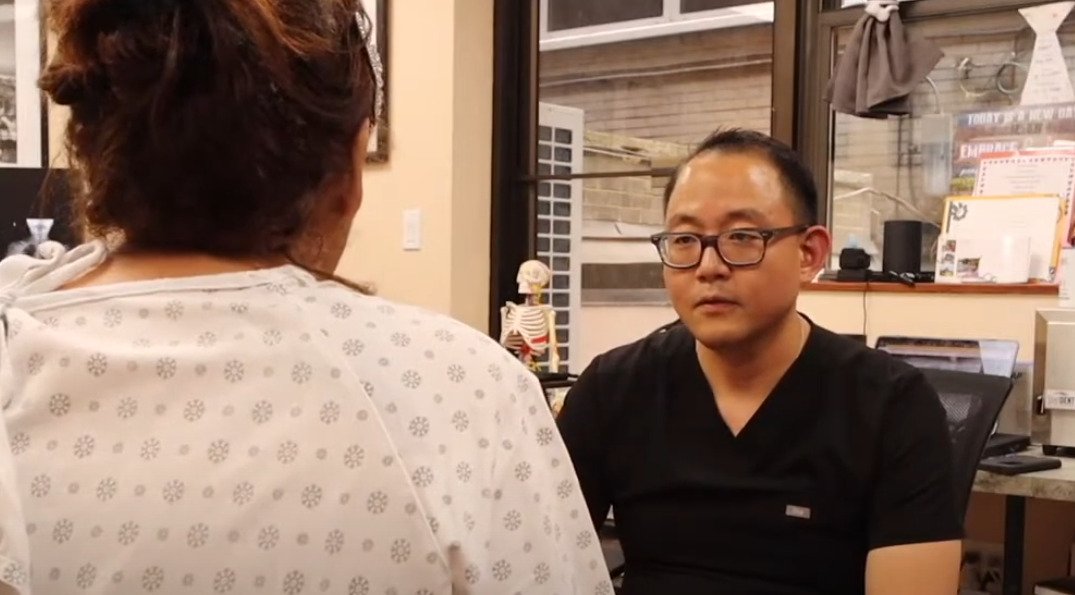
An initial consultation with me can help address sciatica pain. I will assess your symptoms and discuss treatment options. This visit is key to creating a personalized plan for relief.
Seeing me for sciatica can be life-changing. The journey to relief starts with an initial consultation. During this visit, the chiropractor will gather essential information and assess your condition.
Medical History Review
I will review your medical history. This step is crucial for understanding your sciatica.
- Past injuries: Any previous injuries that might affect your spine.
- Current symptoms: Details of your current sciatica symptoms.
- Previous treatments: Any treatments you’ve tried before.
- Lifestyle factors: Daily habits that might influence your condition.
Physical Examination
Next, i conduct a physical examination. This helps identify the root cause of your pain.
Diagnostic Tests
Sometimes, diagnostic tests are necessary. These tests provide a clearer picture of your condition.
- X-rays: To check for any bone abnormalities.
- MRI or CT scans: To get detailed images of your spine.
- Nerve tests: To see how well your nerves are working.
- Range of motion tests: To assess how well you can move.
Discussion Of Treatment Options
Finally, I will discuss potential treatment options. This helps you understand how they plan to address your sciatica.
- Spinal adjustments: Realigning your spine to relieve pressure.
- Physical therapy: Exercises to strengthen your back.
- Lifestyle advice: Tips on posture and activities.
- Follow-up visits: Scheduling future appointments for continued care.
Choosing A Qualified And Licensed Chiropractor

Selecting a qualified and licensed chiropractor for sciatica ensures safe and effective treatment. Trust experienced professionals to alleviate pain and improve mobility. See why I’m the best and my chiropractic license
Choosing the right chiropractor for sciatica is crucial for effective relief. A qualified professional can make a big difference in managing your pain. Below are key aspects to consider when selecting a chiropractor.
Verify Credentials And Licenses
Ensure the chiropractor has the right qualifications. Here are some points to check:
- Education: Confirm they graduated from an accredited chiropractic college.
- Licensing: Verify they hold a valid state license.
- Certifications: Look for additional certifications in specialized areas.
- Continuing Education: Check if they keep up with the latest practices. I have everything, check it out.
Experience With Sciatica
A chiropractor’s experience matters. Look for the following:
- Years in Practice: More years often mean more expertise.
- Specific Cases: Ask about their experience with sciatica patients.
- Treatment Methods: Inquire about the techniques they use.
Patient Reviews And Testimonials
Reading reviews can provide insight into a chiropractor’s effectiveness. Consider these tips:
- Online Reviews: Look for consistent positive feedback. The review my patient is giving on Google Maps after receiving treatment
- Personal Testimonials: Check if patients report sciatica relief.
- Rating Platforms: Use reputable sites like Google or Yelp.
Consultation Availability
Initial consultations are important. They help you gauge the chiropractor’s approach. Consider:
- Free Consultations: Some offer initial consultations at no charge.
- Assessment: They should provide a thorough assessment of your condition.
- Treatment Plan: Expect a clear and personalized treatment plan.
Communication Skills
Good communication is key to successful treatment. Focus on:
- Clarity: They should explain your condition in simple terms.
- Listening: Ensure they listen to your concerns and questions.
- Accessibility: Check if they are easily reachable for follow-ups.
Treatment Techniques And Equipment
Different chiropractors use various techniques. Consider these aspects:
- Techniques: Ask about the specific methods they use for sciatica.
- Equipment: Check if they have modern and well-maintained equipment.
- Customization: Treatments should be tailored to your specific needs.
Cost And Insurance
Understanding the financial aspect is important. Look into:
- Pricing: Ask for a clear breakdown of costs.
- Insurance: Confirm if they accept your insurance plan.
- Payment Plans: Some offer flexible payment options.
By considering these factors, you can find a qualified chiropractor who can help manage your sciatica effectively. Each point ensures you make an informed decision for your health and well-being.
“Bodybuilders and fitness people have been using, very extensively, chiropractors in order to stay healthy and fit. Whenever I had a little problem with my body, I always ran to one of my dear friends, he was always right there with the adjustments. This is how I found out the best way of going, is to use chiropractors, not only after injuries, but also before injury.” – Arnold Schwarzenegger
Frequently Asked Questions
What Is Sciatica And Its Symptoms?
Sciatica is nerve pain from the lower back down the leg. Common symptoms include sharp pain, numbness, and tingling.
How Can A Chiropractor Help With Sciatica?
Chiropractors use spinal adjustments to relieve pressure on the sciatic nerve. This reduces pain and improves mobility.
Is Chiropractic Treatment For Sciatica Painful?
Chiropractic treatment is usually not painful. Most patients feel relief after adjustments, though some may feel mild discomfort.
When Should You Seek Chiropractic Care For Sciatica?
Seek chiropractic care if you have persistent sciatic pain lasting more than a week. Early treatment can prevent worsening of symptoms.
The End
Through chiropractic care I offer effective relief for sciatica pain. It addresses root causes, not just symptoms. Regular adjustments can reduce pain and improve mobility. Many of my patients find significant relief after chiropractic sessions. Always choose a licensed chiropractor for best results. Natural and drug-free, chiropractic care is a great option.
If you struggle with sciatica, consider consulting a chiropractor. Your path to relief might begin with that first visit. Live a pain-free life and restore your well-being. If you want, you can contact us at our address. Pineapple Chiropractic and Podiatry – Clifton 842 Clifton Ave STE 6 Clifton, NJ 07013 and Pineapple Chiropractic and Podiatry – New York 150 E 55th St 2nd Floor Suite 4 New York, NY 10022.
